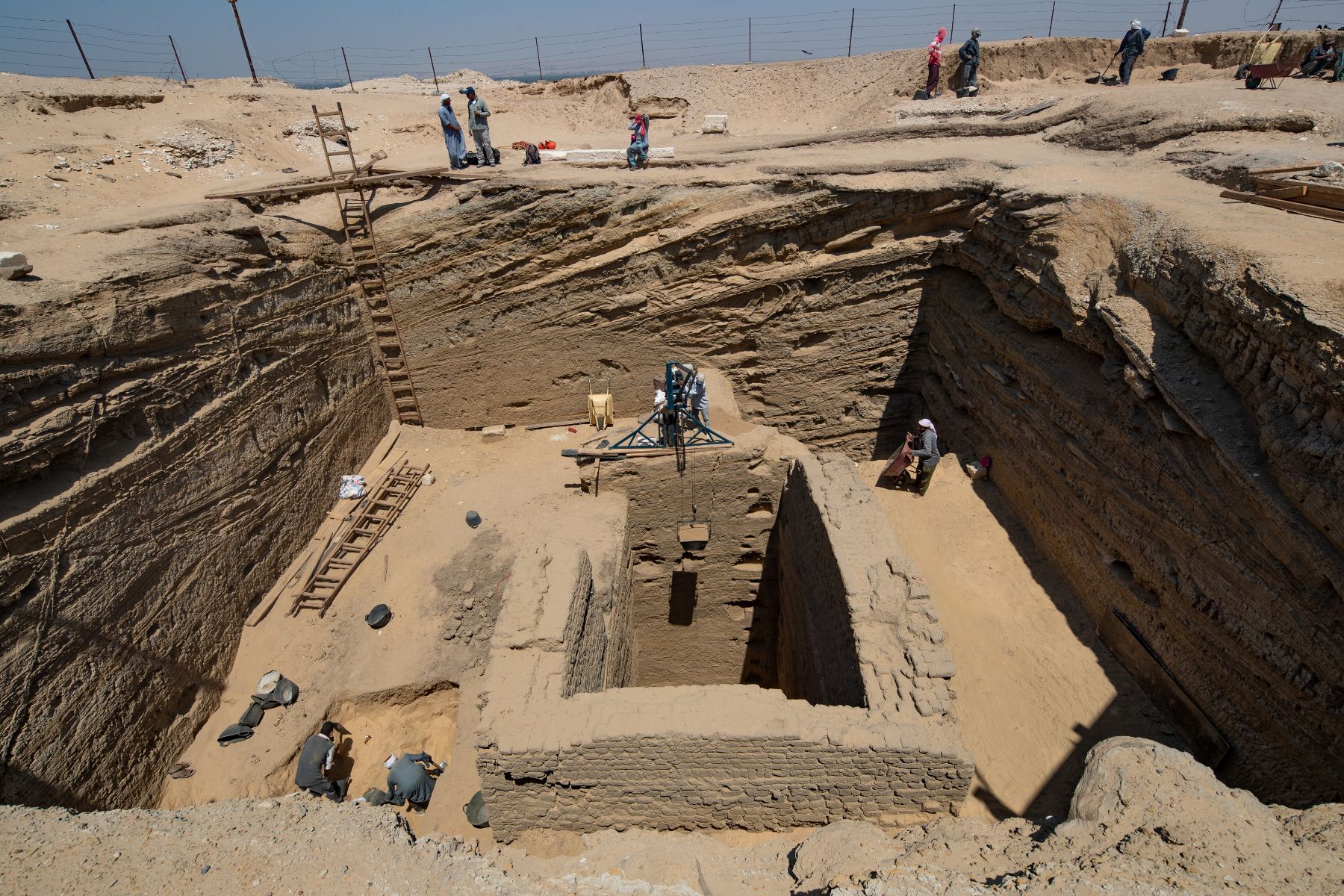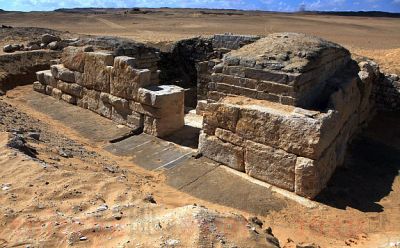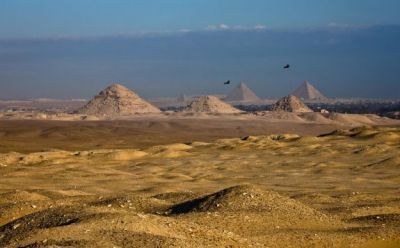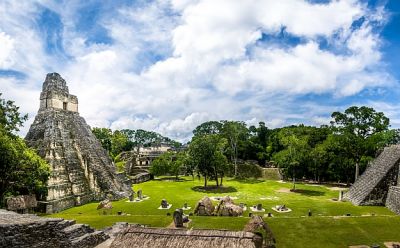in the spring of 2022, an archaeological team from the Czech Institute of Egyptology, Faculty of Arts, Charles University, discovered and carefully documented the tomb of an ancient Egyptian dignitary named Wahibre-mery-Neith during fieldwork in Abusir, Egypt. Although it was looted in antiquity, the site has provided valuable information.
Who was Wahibre-mery-Neith? The tomb most likely dates to the late 26th or early 27th dynasty, the very beginning of the 5th century BCE. On the sarcophagus of the ancient Egyptian dignitary, the most prominent title given is "commander of foreign mercenaries". Wahibre-mery-Neith commanded mercenary soldiers coming from the Aegean Islands and Asia Minor who served in the Egyptian army during the first globalization of the ancient world.
“The tomb belongs to a man who was part of a very narrow social group of the social elite of the time. These people were trying to find a way to regenerate ancient Egypt, which at that time was under enormous civilizational and economic pressure from the Greeks and Persians and had no chance of emerging victorious from this battle.

A beautiful heart scarab was also found in the tomb. It was meant to assure the deceased a favourable outcome in the judgment of the dead.
Therefore, on a symbolic level, they were looking for a recipe to restart their civilization in the past. His tomb, like some others in the vicinity, mimicked the burial chamber of the ruler Djoser, whose tomb is located in Saqqara, about one and a half miles from this burial site. Djoser lived 4,700 years ago and was considered the founder of the Old Empire, the first great state formation in history, and became a living god. So people like Wahibre-mery-Neith imitated his burial and hoped that there would be a restart of civilization and that old Egypt would once again be the most advanced state, which unfortunately never happened,” says Miroslav Bárta, director of Czech Archaeological Research in Egypt, the largest Czech interdisciplinary scientific expedition that systematically works abroad.
No two tombs are the same
The discovery of the Wahibre-mery-Neith tomb follows an earlier find in 2021, when the Czech Archaeological Mission to Abusir discovered the largest embalming deposit ever found in Egypt. The deposit, housed in a 15-metre-deep shaft, contained more than 370 ceramic trays containing raw materials, vessels and other materials that were used in the mummification of the tomb's owner. And it was this largest deposit that belonged to the owner of the newly uncovered tomb, Wahibre-mery-Neith.
“During the spring archaeological season of 2022, the excavation of Wahibre-mery-Neith's shaft tomb continued with the excavation of a huge main shaft measuring approximately 14 by 14 meters. At a depth of about 6 metres below ground level, the shaft was then further divided into several parts, separated from each other by 'bridges' of the original bedrock,” says Jiří Janák, director of the Czech Institute of Egyptology. Archaeological research gradually revealed that another, smaller shaft was dug into the bedrock in the middle of the main shaft for the burial of the remains.
“The tomb of Wahibre-mery-Neith is interesting above all for its form, which still has no exact parallel. The fact that the space around the main burial shaft is filled with other empty shafts is partly reminiscent of the tomb of Vedjah-orresnet from the Abusir necropolis or the so-called Campbell tomb at Giza. The layout of this tomb is unique, however, and we had to change our excavation strategy frequently during the archaeological research.”
Miroslav Bárta agrees. “We had to be very patient for two months before we managed to find the burial chamber, which is really deep and different from most others from this period. It's at the bottom of a shaft that was dug in the middle of another large shaft, which is unique. The builders of the time were really creative. Hundreds and thousands of tombs were built in ancient Egypt and no two are identical, that's the marvellous thing.”
Looted, yet providing valuable finds
The tomb of Wahibre-mery-Neith was plundered in late antiquity. This is evidenced by two forgotten Coptic vessels, dating to roughly the 4th to 5th centuries AD, which were found in the main shaft during archaeological excavations. Nevertheless, Egyptologists managed to find several valuable objects intact and in their original place of storage. These included 402 faience veshbettes - magical figurines of servants who were supposed to do the work of their owner in the afterlife.
Or two undescribed but used alabaster canopic jars - vessels for preserving embalmed entrails from a mummified body - and ten models of Egyptian alabaster goblets, or an ostracon of white limestone that was described in religious texts in hieratic script.
At the bottom of the central tomb shaft, at a depth of about sixteen metres, scientists found a double sarcophagus, partially damaged by thieves already in ancient times. They took the mummified body of the deceased with all the equipment he was carrying and wearing. The only things found in the empty sarcophagus were a beautiful but indescript heart scarab - an amulet ensuring the deceased a favourable outcome in the judgment of the dead after death - and a small amulet in the shape of a headboard. "Interestingly, it seems from the context and the manner of the plundering that the thieves of the time could not have emptied such a large tomb in secret. But all this, as well as the detailed documentation of the sarcophagi and the analysis of the findings, will be subject to further investigation," Janák says.

Czech archaeologists found the massive outer sarcophagus Wahibre-mery-Neith at the bottom of the burial shaft.
What do we already know? The huge, three-metre-high outer sarcophagus Wahibre-mery-Neith was made of two massive blocks of white limestone. Inside the limestone sarcophagus, researchers found aninner sarcophagus made of basalt. Its lid was decorated on the outside with the text of the 72nd chapter of The Book of the Dead, which is supposed to ensure the deceased's resurrection and smooth passage into the next world.
Another specific feature Wahibre-mery-Neith's tomb, according to Jiří Janák, is the fact that it was probably originally generously laid out and planned, but in the end had to be completed in a very hurried manner by its builders and other craftsmen. "Its owner probably died soon and very unexpectedly. We discovered the tomb, the burial chambers and the two sarcophagi in an unfinished state. The text on the outer sarcophagus, for example, was only outlined in ink. The stonemasons only managed to carve a few characters in relief. Then they had to abandon the work, the sarcophagus had to quickly fulfil its main purpose."
The rapidly completed and very austere funerary equipment thus shows us what was absolutely essential in decoration and funerary equipment for the Egyptians. "Even the minimalist decoration and furnishings show that they wished to pass safely through the underworld and emerge with the sun on the eastern horizon into a new life in the afterlife. They hoped to have at least a basic supply of food offerings available at all times. And they also wished that they would not have to work in the next world."
Although the archaeological excavation of the burial of Wahibre-mery-Neith did not offer many excavated objects or an elaborate funerary equipment, it is unique and important, as it offers new insights into the troubled period of the beginning of Persian dominion in Egypt. In combination with outcomes of the ongoing research on the owner’s embalming deposit, a picture of Wahibre-mery-Neith’s life, family background and professional career starts to emerge. He most probably died very unexpectedly, when his tomb and burial equipment were still unfinished. Thus, both the layout of his tomb and its contents provide very valuable information on the importance and meaning of individual parts of the burial equipment and tomb decoration. It also shows us how the ancient Egyptian adapted the material culture of their religious beliefs under difficult circumstances and in times of crisis when the indigenous character of ancient Egyptian civilisation started to vanish.

























